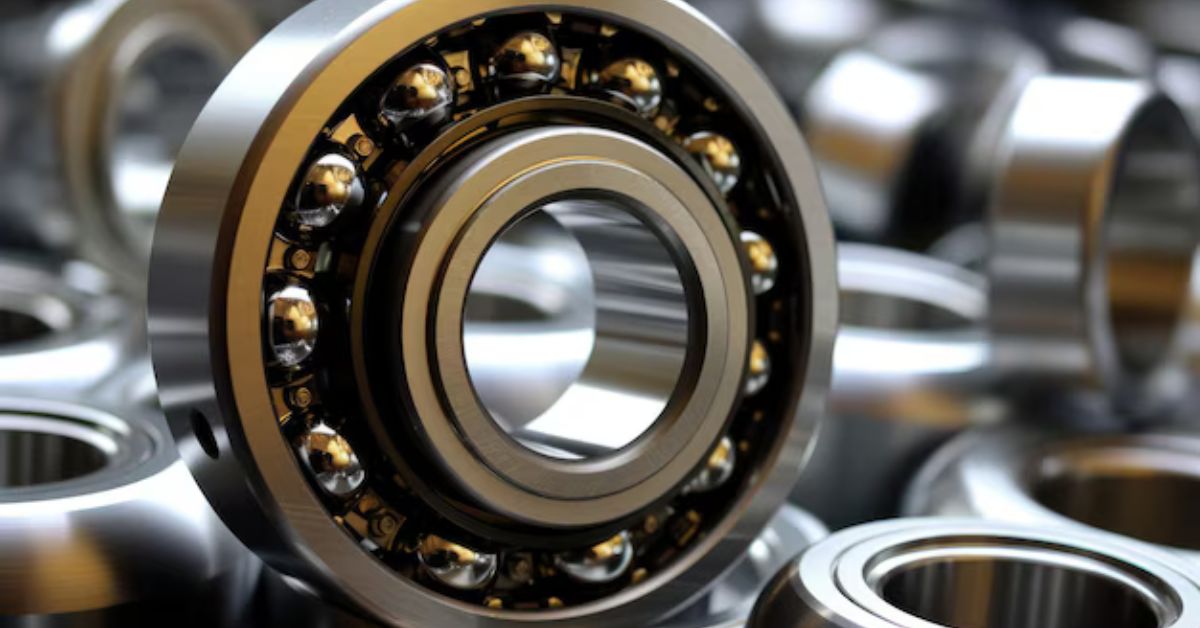The world of automotive parts and fasteners is vast and complex, with each component playing a crucial role in ensuring the performance, safety, and longevity of vehicles. One such component, identified by the part number “561BRS,” stands out as a specialty item that serves specific functions in automotive and mechanical engineering. While this part may not be widely known to the general public, it is essential for industry professionals and those involved in vehicle maintenance or mechanical repairs to understand its significance.
This article delves into the specifics of the 561BRS, covering its application, importance, characteristics, and how it compares to similar parts in the industry. By the end of this article, readers will have a comprehensive understanding of what the 561BRS is, why it is important, and how it fits into broader mechanical and automotive contexts.
What is the 561BRS?
The part number 561BRS typically refers to a type of bearing, specifically a ball bearing, used in various mechanical and automotive applications. Ball bearings are mechanical devices designed to reduce friction between moving parts while supporting radial and axial loads. The “BRS” designation indicates that this bearing has specific characteristics and specifications, which make it suitable for particular uses, such as in machinery, vehicles, and even industrial equipment.
The 561BRS ball bearing is designed to be durable, able to withstand heavy loads and high-speed applications, which is why it’s often found in vehicles and heavy machinery. Bearings like the 561BRS are vital in reducing wear and tear on moving parts, improving efficiency, and extending the lifespan of the machinery in which they are installed.
The Role of Bearings in Automotive and Mechanical Engineering
Bearings play a pivotal role in a wide range of mechanical and automotive applications. Their primary function is to reduce friction between two moving surfaces, such as a rotating shaft and its housing, thereby enabling smooth operation, improved efficiency, and a longer operational life for machinery and vehicles. Bearings like the 561BRS also help absorb and manage the loads exerted on mechanical components, distributing them evenly and preventing premature failure of parts.
In the automotive industry, bearings are used in many critical systems, including the engine, transmission, wheel hubs, and suspension systems. The smooth rotation of parts is essential for a vehicle’s performance, and any failure in the bearing can lead to catastrophic mechanical issues, increased friction, heat generation, and eventual system breakdown.
For example, in wheel hubs, bearings allow the wheels to rotate with minimal friction, contributing to a smoother ride and better fuel efficiency. In the engine, they ensure that the moving parts operate seamlessly, reducing energy losses caused by friction and improving overall performance.
Characteristics of the 561BRS Bearing
Like all ball bearings, the 561BRS is designed with precision engineering in mind. It consists of an inner ring, an outer ring, a cage to hold the balls, and a series of rolling balls that reduce friction between the rings. The specific characteristics of the 561BRS make it well-suited for high-performance and high-stress environments, ensuring longevity and reliability.
- Durability: The 561BRS is built to withstand heavy loads, making it ideal for use in vehicles and machinery that experience significant stress. The materials used in its construction are typically hardened steel or ceramic, which are resistant to wear and corrosion, ensuring a long service life.
- Low Friction: One of the primary functions of a bearing is to reduce friction between moving parts, and the 561BRS excels in this regard. The precision-engineered balls within the bearing allow for smooth motion, reducing energy losses and wear on the surrounding components.
- Heat Resistance: Bearings can generate heat due to friction, especially in high-speed applications. The 561BRS is designed to handle high temperatures, maintaining its integrity and performance even under intense operating conditions.
- Sealed Design: Many bearings, including the 561BRS, are sealed to protect the internal components from dust, dirt, and moisture. This design feature extends the life of the bearing by preventing contaminants from entering and causing damage.
- Versatility: While the 561BRS is often associated with automotive applications, its versatility means it can be used in a wide range of machinery, from industrial equipment to household appliances, wherever there is a need to reduce friction between rotating parts.
Application of the 561BRS Bearing in the Automotive Industry
The automotive industry heavily relies on precision-engineered components, such as the 561BRS bearing, to ensure optimal performance and safety. Bearings are used in various parts of a vehicle, and the 561BRS bearing, in particular, may be found in the following areas:
- Wheel Hubs: In wheel hubs, the bearing allows the wheel to rotate freely with minimal friction. This contributes to the vehicle’s overall performance, ensuring smooth handling, improved fuel efficiency, and reduced wear on tires and other components. The 561BRS bearing’s durability ensures that it can handle the stresses of constant rotation and the weight of the vehicle.
- Transmission Systems: Bearings are essential in the transmission system, where they reduce friction between gears and shafts, enabling smooth gear shifts and efficient power transfer from the engine to the wheels. The high performance of the 561BRS bearing ensures that the transmission operates reliably under heavy loads and at high speeds.
- Suspension Systems: In suspension systems, bearings help absorb shocks and vibrations, providing a smoother ride for the occupants of the vehicle. The heat resistance and low friction of the 561BRS bearing make it ideal for this application, where it must endure the harsh conditions of the road.
- Engine Components: Bearings are also used in various engine components, such as crankshafts and camshafts, where they reduce friction and allow for the smooth rotation of parts. The 561BRS bearing’s ability to handle high temperatures and heavy loads makes it suitable for these demanding applications.
Comparison to Other Bearings
While the 561BRS is a high-performance ball bearing, there are many other types of bearings available in the market, each designed for specific applications. It’s helpful to compare the 561BRS to other types of bearings to understand its unique advantages:
- Tapered Roller Bearings: Unlike ball bearings, which use spherical balls to reduce friction, tapered roller bearings use conical rollers. These bearings are better suited for applications involving heavy axial and radial loads, such as in heavy-duty trucks. However, ball bearings like the 561BRS are more versatile for general-purpose use.
- Needle Bearings: Needle bearings contain long, thin cylindrical rollers that distribute loads over a larger surface area. While they are ideal for applications with high radial loads and limited space, they do not handle axial loads as well as ball bearings like the 561BRS.
- Ceramic Bearings: Ceramic bearings are made from non-metallic materials that offer excellent resistance to heat and corrosion. They are often used in extreme conditions, such as in racing vehicles. While ceramic bearings offer superior performance, they are more expensive than standard steel bearings like the 561BRS.
The versatility, durability, and cost-effectiveness of the 561BRS make it an ideal choice for a wide range of applications, whereas other bearing types may be more specialized.
Importance of Proper Bearing Maintenance
While bearings like the 561BRS are designed to be durable and long-lasting, proper maintenance is crucial to ensure they continue to function correctly. Regular inspections should be carried out to check for signs of wear, corrosion, or damage. Lubrication is also essential to reduce friction and prevent overheating, and sealed bearings should be checked to ensure that the seals remain intact.
If a bearing fails, it can cause significant damage to the surrounding components and lead to costly repairs. Therefore, it is important to replace worn or damaged bearings promptly and ensure that they are installed correctly.
Conclusion
The 561BRS bearing may be a small component, but it plays a critical role in the performance and longevity of vehicles and machinery. Its ability to reduce friction, withstand heavy loads, and endure high temperatures makes it a valuable asset in automotive and mechanical engineering. By understanding the characteristics and applications of the 561BRS bearing, industry professionals can make informed decisions when selecting components for their projects, ensuring reliability and efficiency in their systems.
As the automotive and mechanical industries continue to evolve, components like the 561BRS bearing will remain essential, providing the foundation for smooth operation and long-lasting performance in a wide range of applications.











